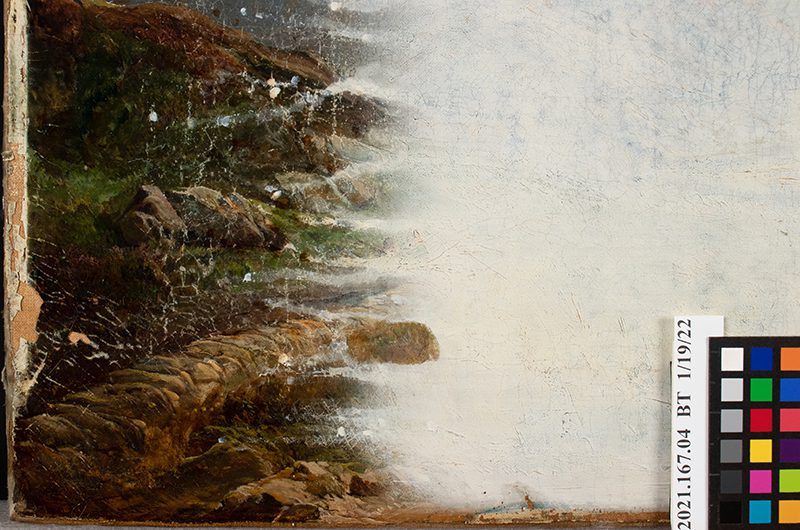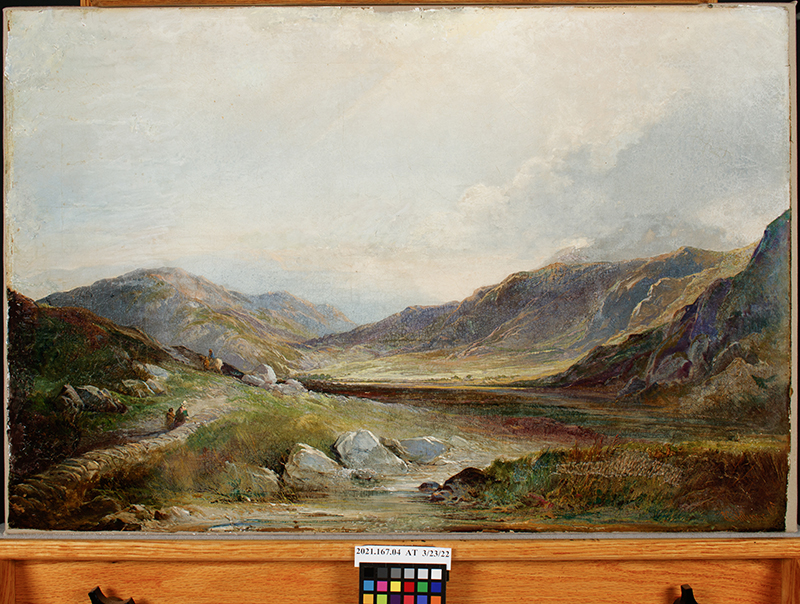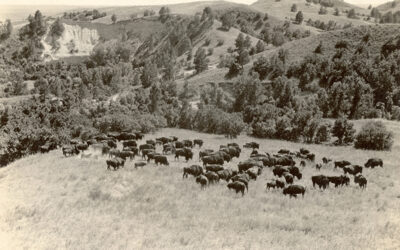Everyone likes a mystery. The painting in question certainly was. What had caused the white surface? Could anything be done? What lay beneath? The painting owners had bought it at an estate auction in western Nebraska. The estate had been owned by a man whose grandfather had been an art dealer in Portland, Oregon. The house had been vacant, and a pipe had frozen and burst, damaging the painting. The owners spent $2 on the painting and hoped they had a treasure on their hands. Their daughter lived down the street from the Ford Center, so they brought it here hoping it could be saved and that something beautiful might be underneath the clouded surface.

The before treatment photo shows the blanching of the varnish that obscures the painting underneath.
Kenneth Be, the Ford Center’s painting conservator when we received the painting, examined it carefully. The oil painting on canvas had likely been stored sideways and exposed to a blast of freezing water from the burst pipe which had then dripped down the surface. The moisture had caused the varnish to blanch, becoming cloudy and opaque. The original canvas had also become infested with mildew and the paint had wrinkled and flaked. The varnish that hadn’t blanched was yellowed from oxidation.

This detail photo shows the small solvent test. By testing the varnish layer, it was clear that it could be removed overall and the painting revealed.
With a few small tests, it was determined that the blanching could be corrected. The varnish was removed. The wrinkled and flaking paint was treated on the heated suction table. The old, mildewed lining was removed because the original canvas had been relined in the past. The painting was lined onto a new canvas and remounted on a new stretcher. A new varnish was applied, and losses to the original paint were filled and retouched.

After treatment, the painting is exposed. The artist’s signature is in the lower right corner. The area of painting that had been damaged by the steam is still slightly lighter than the area that was not damaged.
When the treatment was complete, a beautiful landscape was revealed. The signature reads “E.C. Williams” and could possibly be attributed to Edward Charles Williams, an English landscape painter of the Victorian Era, though that would have to be verified by an expert. As the after-treatment photo shows, some discoloration to the original painting could not be corrected. But overall, what looked like a lost cause has been brought back from the brink and saved from the trash heap.



